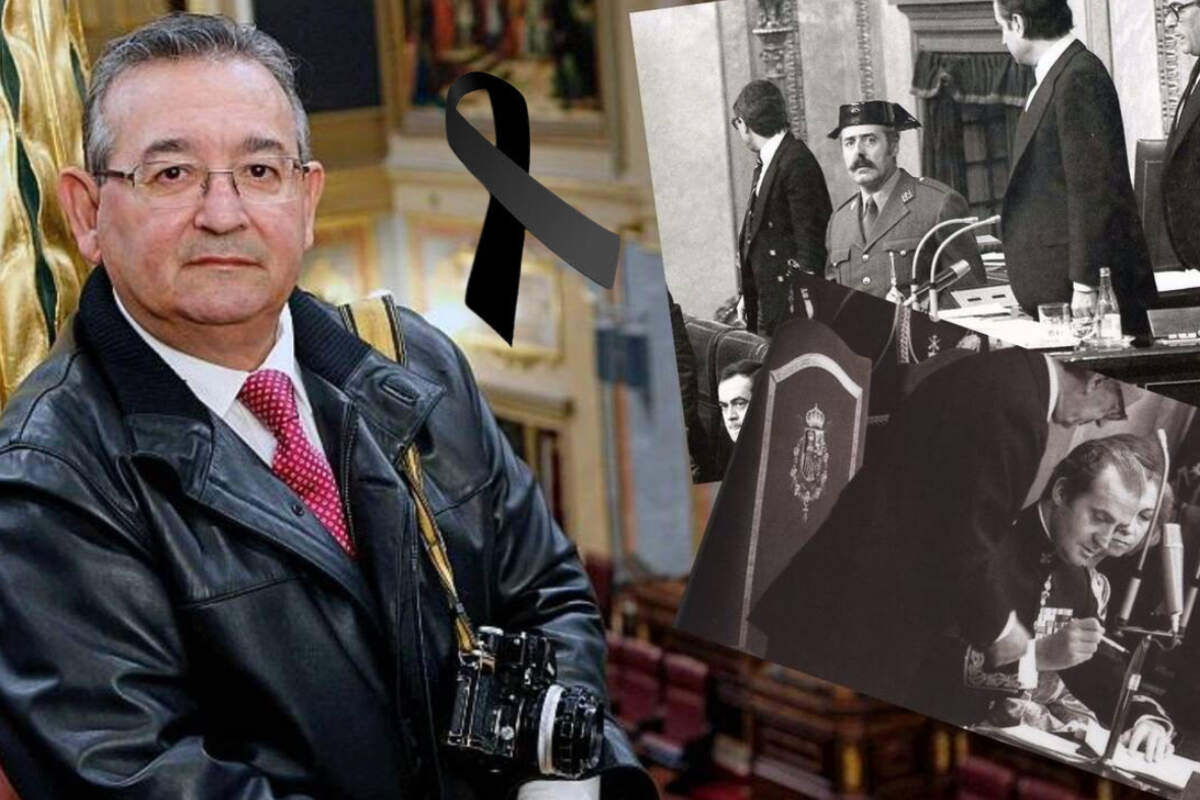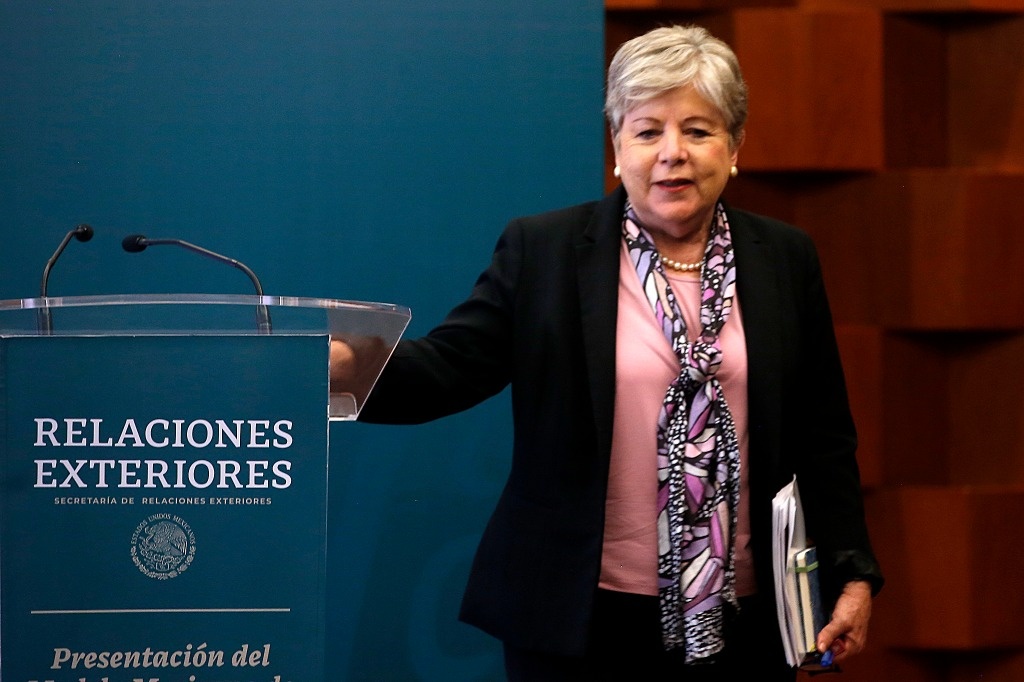The famous Madrid photojournalist Manuel Hernandez de Leonknown in the profession as ‘The Patolas’, has died at the age of 75 in Madrid. According to what has been learned elcierredigital.com“the photojournalist suffered from various kidney problems and recently suffered a heart attack.” Manuel Hernández de León’s wake has been set up at the San Isidro Funeral Home in the Spanish capital.
As the photographer claims Bernardo Paz in conversation with elcierredigital.com, “The photojournalist had a long and extensive career. He worked for many years at the EFE Agency and alongside the royal family. In fact, He had a great devotion to Juan Carlos I“. This past October 2023, the photojournalist was one of the attendees at the Exhibition on the Spanish Royal Family that took place at the Nikon Gallery in Madrid and where he met the Infanta Elena and with whom he had the opportunity to talk on several occasions. “I was delighted,” Bernardo Paz revealed to elcierredigital.com.
| The Digital Closure
With the death of Manuel Hernández De León who, together with the journalist and director of this media Juan Luis Galiacho He belonged to the Club de los Amigos de la Boina, and photojournalism has lost one of its most important figures, who had the opportunity to portray some of the most important episodes in the history of Spain. That is why today we reproduce one of the last interviews he gave to our newspaper.
The beginnings of photojournalist Manuel Hernández de Léon
As the photojournalist told elcierredigital.com, “My first photograph was of a taxi that had had an accident. The car was in pretty bad condition, but my father wouldn’t let me go out at night (when the accident happened), and I had to wait all night awake and with the first ray of sunlight I was already outside looking for the taxi, which was still there.” A photograph that was published in the newspaper Above.
| The Digital Closure
With a decaf in hand, Hernández de León was approachable, intelligent, empathetic and simple, and did not hesitate to acknowledge that throughout his career he has experienced unlikely situations that have “marked” him, and he also acknowledged having witnessed moments that would probably have generated major controversies if they had been recorded. A “street” photojournalist, Manuel often arrived at the scenes of his photographs through methods that show an intelligence comparable to few.
“I joined the EFE Agency as a ‘bellhop’ shortly after the taxi photo, and I was the ‘jack of all trades’ there. I served coffee, helped with developing photos, etc. There I fell in love with this profession“I saw how they sent photojournalists to photograph accidents and attacks and for me it was really exciting, then I saw the developed photos and I felt real passion,” Hernández de León recalled about his beginnings.
For Hernández de León, “the first thing is the photo, the rest is secondary.” In love with photojournalism, Manuel gradually made a name for himself at EFE, where his photographs were finding more and more spaces in the agency’s publications.“After a few months in the photography lab, I discovered that I wanted to ‘go street’ and I started to try my hand at it”explained the photojournalist, who became a photojournalist in 1977 and later held the position of editor-in-chief of photographers, a job he held until his retirement in 2012.
To be aware of all the emergencies, Manuel remembered listening to the communications of the firemen and the police in order to get to the scene of the events quickly. “I have seen everything, I remember arriving at the scenes of ETA attacks and seeing the bodies of Civil Guards with gunshots and covered in blood, something that impacts you and leaves a mark on you,” Hernández de León revealed to elcierredigital.com.
| The Digital Closure
He and his camera have always been inseparable. Hernández de León recalled having carried several hidden away in case the opportunity arose to capture a newsworthy event. “I have always carried a camera with me, and on many occasions I have hidden cameras in my pants or at ankle height, and I have also met famous people by chance while having dinner and ended up photographing them.”
It can be said that nothing is above journalism on Hernández de León’s scale of priorities, and he admitted with a laugh that his wife “is already used to it and knows it.” Proof of this love for information is his trip to Peru, Brazil and Argentina to photograph the Emeritus just a week after his own wedding.
Manuel Hernández de León’s bond with the Royal Family
The professional relationship between the photojournalist and Juan Carlos de Borbón lasted more than thirty years. Since 1978, Manuel was an accredited journalist at La Zarzuela and accompanied Juan Carlos during his official trips, summer vacations, regattas, and many others. “It is a period that I remember fondly and that gave me incredible moments. We had a relationship of great trust,” recalled Hernández de León, who admits to having less contact with the Emeritus for some time now.
| The Digital Closure
He had a similar relationship with the current king, Felipe VI, whom he accompanied during his military training in the Navy. Hernández de León recalled some anecdotes about the current king during his stay on the ship Juan Sebastián Elcano: “Felipe was the Bourbon cadet and did not receive any preferential treatment, he was just one more. In fact, one day he grabbed a tray full of fried eggs to serve, most of them curdled, the king tripped and the tray fell and scattered the eggs on the floor, immediately Felipe bent down to pick them all up,” Hernández de León fondly recalled with laughter.
| The Digital Closure
The relationship between the royal family and the photojournalist has always been in good health. In fact, Manuel has attended the weddings of all the princesses, including that of Felipe VI: “We have been together in many important moments, for their wedding I gave Felipe and Letizia a digital album with their wedding photosa gift that I think made them very excited,” the photojournalist recalled during an interview with elcierredigital.com.
February 23: ‘star chapter’ in the career of Hernández de León
On February 23, 1981, the fate of Spain changed and Manuel witnessed it firsthand. Lieutenant Colonel Antonio Tejero stormed into the Congress of Deputies with the intention of staging a coup d’état. “When the commotion started, I thought that an ETA commando had come in and that the Civil Guards I saw were coming to help with the situation”recalled Hernandez de Leon.
| The Digital Closure
Manuel can say that he was one of the two photojournalists who were in the chamber at that time. In fact, the photographs he took that day, the negatives of which were hidden in Manuel’s underwear, made the front pages of countless national and international media.In one of the iconic photographs, you can see Tejero looking at Manuel with a serious expression.However, Tejero was only recognizing Hernández de León, since they already knew each other from an interview conducted just fifteen days before the coup.
| The Digital Closure
Hernández de León’s captures that day earned him international recognition, both for his commitment to reporting and for his courage in daring to photograph the shocking scene, despite the danger it could entail. On this, the photojournalist has pointed out that some time later, the former Minister of Defense, Manuel Gutierrez Melladoaddressed him during a meeting: “He told me that if they had caught me I probably would have had a very bad time,” Hernández de León recalled.
Journalism of the past and present
After a career full of covers and iconic images, Hernández de León acknowledged that “things in journalism have changed a lot, the whole issue of values and principles with which journalists of my generation were raised has disappeared, now the media are real businesses and, therefore, their real objective is money,” the photojournalist stressed.
“Universities are increasingly providing jobs for journalists, but the demand for journalists is not growing and we find that there are too many journalists for too few positions,” Hernández de León explained. elcierredigital.com.
| The Digital Closure
The photojournalist pointed out that “I started working at that age (13 years old) because I had to bring money home, those were different times, the current generations have grown up in very different conditions.” “Times have changed and advertising, especially institutional advertising, is key to financing almost all media outlets,” says the photojournalist, who has pointed out that “one of the keys to this job is having friends even in hell and being professional.”
The photojournalist has portrayed some of the most relevant episodes in the history of Spain and has left a broad legacy in the world of photojournalism. A field that today bids farewell to one of the greats and to the one who was one of the ‘eyes’ of the EFE agency. Rest in peace.
WE NEED YOU! Collaborate with THE DIGITAL CLOSURE to support investigative journalism and maintain the freedom of information that those in power try to limit. You can also subscribe to our channel Youtube.


